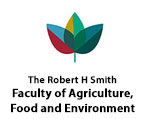Citation:
Date Published:
MAYAbstract:
Strains of Acidovorax citrulli, the causal agent of bacterial fruit blotch (BFB) of cucurbits, can be assigned to two groups, I and II. The natural association of group I and II strains with different cucurbit species suggests host preference; however, there are no direct data to support this hypothesis under field conditions. Hence, the objective of this study was to assess differences in the prevalence of group I and II A. citrulli strains on cucurbit species in the field. From 2017 to 2019, we used group I and II strains to initiate BFB outbreaks in field plots planted with four cucurbit species. At different times, we collected symptomatic tissues and assayed them for group I and II strains using a group-specific PCR assay. Binary distribution data analysis revealed that the odds of melon, pumpkin, and squash foliage infection by group I strains were 21.7, 11.5, and 22.1 times greater, respectively, than the odds of watermelon foliage infection by the group I strain (P < 0.0001). More strikingly, the odds of melon fruit infection by the group I strain were 97.5 times greater than watermelon fruit infection by the same strain (P < 0.0001). Unexpectedly, some of the group II isolates recovered from the 2017 and 2019 studies were different from the group II strains used as inocula. Overall, data from these experiments confirm that A. citrulli strains exhibit a preference for watermelon and melon, which is more pronounced in fruit tissues.

